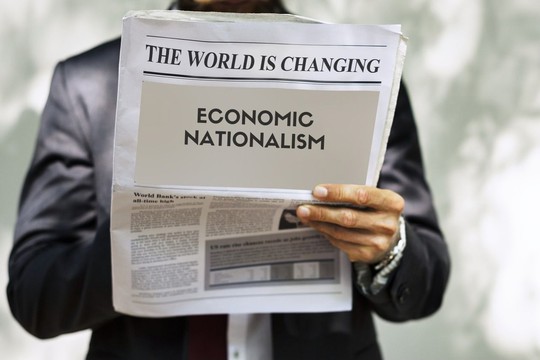United States President Donald Trump’s ‘Liberation Day’ announcement on sweeping tariffs on imports in an effort to reset global trading relationships have triggered severe stock market volatility, writes M.K. Bhadrakumar, Indian Ambassador and prominent international observer.
The life of an average American is wired into Wall Street and the stock prices become the stuff of politics. Trump has drawn flak for perceived misjudgment. Indeed, populist economic policies can carry a heavy price tag. The pall of an economic downturn descends on Trump’s second term. The drop in the price of tech stocks this week conveys a troubling message, as it caused a rise in yields on US Treasury long-term bonds, stoking fears of further inflation.
However, Trump is a Lionheart, and his retraction under fire is unthinkable. Actually, he revels in gambit for the sake of a compensating advantage. Rumours appeared that Trump intentionally strategised a market selloff. Indeed, he himself shared a link to a video which initially appeared on TikTok in March, and was shared by him on April 4, two days after his tariffs announcement, on his social media platform Truth Social.
“Trump is crashing the stock market by 20% this month, but he’s doing it on purpose… And it could make you rich” the video said. It continued that such a move by Trump would help “push cash into treasuries, which forces the Fed to slash interest rates in May… It also weakens the dollar and drops mortgage rates. Now it’s a wild chess move, but it’s working.”
In reality, Trump’s tariff policies are a mix of deep strategic thinking and impulsive decision-making, which are characteristic of his political style. According to US commerce secretary (and a longstanding friend of the president) Howard Lutnick, Trump used to talk about this project even 35 years ago.
The elements of strategic thinking can be identified as follows: first, economic nationalism. The tariffs are rooted in his ‘America First’ doctrine, where he seeks to address the trade deficit, resuscitate manufacturing jobs, and reduce the dependence on foreign goods with a view to revitalise industries.
Second, tariffs form part of a larger strategy to force trade concessions out of China — simply put, they create economic leverage to negotiate a better deal for the US.
Third, reshape global trade rules in ways that would benefit the US economy, especially labour and industry. Fourth, much of this is also a bargaining tactic, predicated on the estimation that trade disruption would ultimately prompt improved trade agreements, and a shift in the global trade landscape.
Most importantly, the tariffs will bring in additional income for the US government, which could be utilised for funding various government initiatives while taxes are lowered and reduce the federal budget deficit. For the first time, a serious attempt is being made to address the US’ debt burden.
That said, there could always be unintended consequences — higher prices for American consumers, retaliatory tariffs, uncertainties that are harmful for businesses, and friction in global economic relations with allies and trading partners.
In this complex scenario, India’s response reflects a thoughtful assessment that this is not necessarily a hostile move and can even be visualised as an extension of US domestic politics. Trump too had an easy option like his predecessor Joe Biden had by printing paper currency and living it up — even fighting a futile costly war abroad.
Trump’s ‘America First’ stance resonates with his core base of working-class voters who were left behind by globalisation, particularly in the so-called Rust Belt states (Michigan, Ohio, and Pennsylvania). It fulfils an electoral pledge to counter unfair foreign competition and trade policies and is seen as standing up to China to protect US interests.
Trump’s protectionist policies are of a piece with his commitment to ‘draining the swamp’. Therefore, the optics of standing up to establishment elites will rally his core supporters. All in all, therefore, India's rejection of a confrontational path is prudent. A retaliation serves no purpose. Trump is determined to push through this most ambitious plank of his legacy, which he has initiated within the first 100 days of his presidency so that the dust settles down before the fourth year.
India is not sailing in the same boat as China or the European Union, but, rather, is in sync with the approach of the Global South, as apparent from the 50-odd phone calls Trump took from world leaders seeking negotiations, who include the General Secretary of the Communist Party of Vietnam Tô Lâm reportedly proposing a zero tariff trade regime with the US. Broadly, Trump’s expectations stand vindicated.
read more in our Telegram-channel https://t.me/The_International_Affairs

 11:11 11.04.2025 •
11:11 11.04.2025 •























